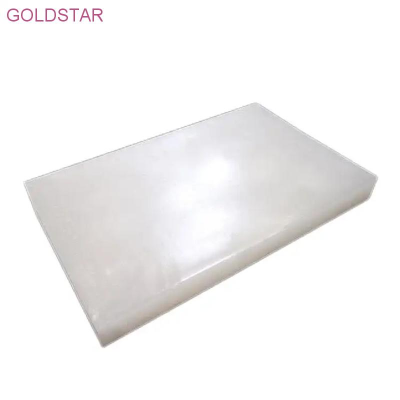-
Categories
-
Pharmaceutical Intermediates
-
Active Pharmaceutical Ingredients
-
Food Additives
- Industrial Coatings
- Agrochemicals
- Dyes and Pigments
- Surfactant
- Flavors and Fragrances
- Chemical Reagents
- Catalyst and Auxiliary
- Natural Products
- Inorganic Chemistry
-
Organic Chemistry
-
Biochemical Engineering
- Analytical Chemistry
-
Cosmetic Ingredient
- Water Treatment Chemical
-
Pharmaceutical Intermediates
Promotion
ECHEMI Mall
Wholesale
Weekly Price
Exhibition
News
-
Trade Service
According to an October 8 report by Kpler, a global commodity data provider, Iran's national oil company is deploying more tankers of its own approval to maintain a high level of crude oil exports, without going through OPEC coordination, and storing about 100 million barrels of crude overseas ready to supply more oil to the global market at any time, according to data provided by Kpler indicating that about 40 million barrels are stored in the waters of Singapore and 53 million barrels in the Persian Gulf to wait for Asian buyers
。
Oil export facilities in southern Iran
For Iran's oil industry, this timing is accidental, opening a window of opportunity for Iran to increase fiscal revenue, Iran's oil reserves are ranked fourth in the world, and has second only to Russia in natural gas reserves, and Iran is currently the only oil producer
on the planet that has the potential to add a large amount of oil supply to the global oil market after OPEC+ announces a sharp reduction in production.
In response, Iran's oil minister told Iranian media on October 6 that although Iran's oil and petrochemical industries are affected by the double impact of dollar restrictions on settlement and regional conflicts, Iran has been seeking to develop new customers and expand the market, and is ready to rejoin the global energy market, as oil wealth increases, Iran has been filling its oil profits into its national treasury and plans to rebuild the economy, Iran plans to attract about $160 billion worth of foreign investment to its oil industry by 2029
。
South Pars gas field in the port of Ashaluye, northern Persian Gulf, Iran
For example, as Iran faces growing domestic demand for fuels and petroleum products, two $17.
8 billion refinery construction contracts have been awarded to domestic consortiums to seek to increase its crude refining capacity by another 600,000 b/d
over the next five years.
Iranian Economy Minister Khanouzi also publicly stated on October 6 that Iran's oil and condensate export revenue increased by 596% from March to September 2022 compared with the same period in 2021, and data released by the Iranian Customs Administration on October 4 showed that the country's trade volume reached $50.
282 billion in the first half of fiscal year 2022 as of the end of September, an increase of 13.
2%
over last year.
During the period, exports of non-oil commodities, including petrochemicals, agricultural products and metal minerals, increased by 21.
5%
compared with the same period last year.
China is the largest buyer of Iranian goods, with purchases worth about $7.
842 billion, followed by Iraq and the United Arab Emirates
.
Iranian farmers collect dates in an orchard
Immediately afterward, Iran's economy minister said that Iran's oil industry is becoming stronger and stronger, with strong oil sales to the global market to stabilize global oil prices and high inflation, and now the entire foreign exchange, transaction settlement system has been working hard to ensure that the oil export business can be carried out normally, and has used innovative methods and new logistics
in its oil sales contracts.
For example, the Iranian authorities have begun to reform and innovate in the field of foreign exchange, officially replacing the original foreign exchange status of the US dollar with the renminbi, the euro and the dirham, and listing the renminbi, euro and dirham as the country's three major foreign exchange currencies (please refer to the chart below), and at the same time, more other currencies such as the Russian ruble, Turkish lira and Indian rupee will be introduced into the foreign exchange system of the Iranian central bank, and the digital currency
is planned.
This means that Iran will expand the use of the renminbi, and considering that the RMB crude oil futures have been enhanced in the Asian market, it can also provide another oil currency option for oil-producing countries, including Iran and Venezuela, which will become more clear
in the context of the expanding commercial and trade activities between China and Iran.
Iran's net foreign assets increased by 39.
1 percent to 5,928.
9 trillion riyals in the 12 months to the end of August, and the share of renminbi assets in Iran's international reserves has reached 20 percent
, according to the central bank of Iran.
Considering that RMB crude oil futures have become more functional in pricing power in Asia-Europe markets, this will provide oil producers such as Iran and Venezuela with another option for oil currencies
.
Panoramic view of Damavand Peak northeast of Tehran, Iran
According to preliminary assessments by Vortexa Analytics and S&P Global Data, more than 20 million tons of Iranian oil have continued to arrive in China in the 24 months to September, mostly in yuan or euros with Chinese buyers, indicating that the yuan has played the role of
oil currency.
Iranian tanker in the Strait of Hormuz
The reporter also noted that Venezuela, another oil power, has also replaced part of the original foreign exchange function of the US dollar with yuan, and has begun to support RMB settlement in oil transactions and allow trading parties to exchange in
the foreign exchange market.
Oil refinery in Puerto de la Cruz, Venezuela
According to a report released by industry research firm Algemeiner, in recent years, Iran's and Venezuela's dollar-bypassing barter cooperation has borne fruit, and Iran and Venezuela have been seeking closer economic and energy ties to offset the impact of dollar restrictions on their economies, such as Iranian companies that have provided Venezuela with key equipment and technology
needed for the country's oil sector in the past.
According to tracking data from Venezuela's Eikon vessels, a total of 40 shipments departed Venezuelan waters to Asian markets in September, carrying an average of 710,000 barrels of crude oil and fuel per day, while Venezuela has received more than 24 million barrels of gasoline from Iranian companies since the beginning of this year and delivered corresponding heavy crude oil to Iran in exchange
.
Venezuelan oil exports increased
The analysis believes that Venezuela has seized the opportunity of high oil prices, and after the first positive GDP growth in seven years in 2021, GDP is expected to grow at the fastest rate in 15 years to 8.
3% in 2022 (previously expected to be 5.
2%), up from 1.
9% in 2021, achieving a transformation of the oil economy from poverty to rich
.
Not only that, but the Venezuelan authorities have also ordered the official settlement of oil in the oil digital currency "Petro" to circumvent the dollar restrictions, and made it clear that the goal is to convert all oil sales in the country into petro
.
As of September, Venezuela's petro was pre-sold for $6.
2 billion, each of which was pegged to
oil prices, according to the data.
At this critical juncture, four more major powers have unexpectedly announced that they will follow the example of digital currencies to achieve the goal
of de-dollarization.
According to Iranian Oil Minister Javad Owji said on October 1, Japan is determined to expand economic and trade relations with Iran, strive to promote financial and energy cooperation between the two countries, and hope that Japanese energy companies will expand their investment
in Iranian oil and gas projects.
According to a report released by the Bank of Japan in an update on September 12, the Bank of Japan and the Ministry of Finance plan to work with several large Japanese banking institutions to prepare to establish a digital currency-backed international financial network, similar to SWIFT, and can add a cross-border transaction settlement system in the field of oil transactions with Iran to bypass the centralization of the US dollar.
The data shows that Iran is Japan's main oil supplier, and Japan, as an economic ally of the United States, also advocates the use of new technologies to de-dollarize in the field of oil trading, which is obviously unexpected
by the market.
At the same time, in the context of the European economy falling into the energy crisis, many European countries represented by Germany, France, and the United Kingdom have also begun to negotiate with Iran to carry out a system that can conduct digital currency transactions in the oil and gas field to circumvent the dollar restrictions
.
Immediately afterward, the EU also plans to create a euro-priced benchmark price for crude oil in 2023 and will serve as the default currency
for energy contracts between EU member states and third countries such as Iran, on the basis of testing the digital euro.
Iranian city of Tehran
Therefore, Iran and Venezuela, as the world's two major oil producers, in the environment of the US dollar restricted oil industry, in order to supply more energy to the world and find another way out of oil monetization, it is logical, which indicates that the global crude oil market needs to re-establish the balance and commodity prices rise in the market environment, the economies of the two countries are beginning to improve, or will achieve poverty to rich, especially in the context of the United States due to its own high inflation hope to ease oil restrictions on Iran and Venezuela will become more clear
。
The new development is that, according to Iran's Minister of Industry, Mines and Trade, Iran has officially approved the use of digital currencies instead of the US dollar and the euro for imports, and has piloted the first tens of millions of dollars of transactions, and it is expected that by the end of October, the contracts signed in digital currencies will be widely used for Iran's foreign trade
.
Iran's landmark Iranian Temple
The analysis believes that these new actions in Iran, Venezuela, Japan, the United Kingdom and many European countries show that by introducing a digital currency based on blockchain technology to anchor the local currency or supported by strategic resources such as oil and gold, and strengthening financial foreign exchange settlement and innovative customer market positioning, it has the ability to weaken the US dollar or bypass SWIFT, then, creating a digital currency that can be accepted by central banks around the world is of course a solution, which can facilitate transactions in the global market, and at the same time, China's energy futures market may also promote the trial
of the digital yuan.







